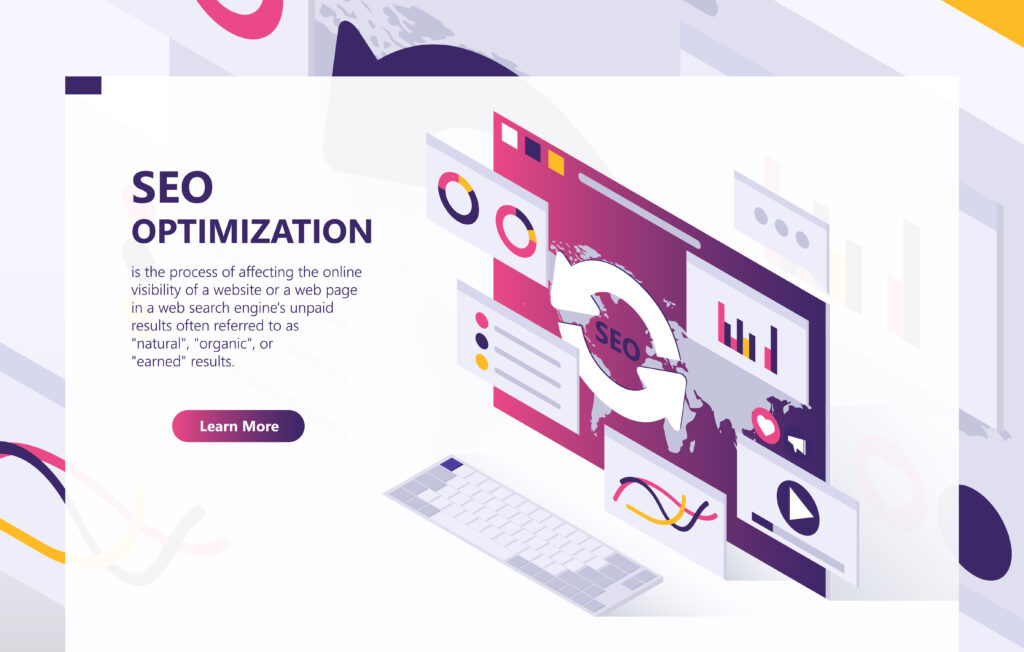WordPress remains a top choice for website owners due to its robust features, scalability, and strong SEO capabilities. Successfully optimizing a WordPress site can significantly boost your visibility in search engine results, enhancing both user engagement and traffic. This detailed guide provides an in-depth look at the essential SEO strategies and plugins that will help you improve your site’s search engine rankings.
Understanding SEO Basics on WordPress
Search Engine Optimization (SEO) on WordPress involves tailoring your site to the algorithms that search engines use to rank pages. By optimizing your site, you’re increasing the likelihood that your pages will appear at the top of search engine results, attracting more organic traffic. WordPress is particularly SEO-friendly from the start, thanks to its use of best coding practices and logical architecture.
Understanding SEO begins with keywords. These are the phrases that users type into search engines when they’re looking for information, and they should guide the content you create on your WordPress site. Effective keyword research can uncover the exact phrases that potential visitors are searching for, which helps in crafting content that aligns with user intent. Tools such as Google’s Keyword Planner, Ahrefs, and Moz Keyword Explorer are invaluable for discovering these terms and understanding the competition and search volume for each keyword.
Optimizing WordPress Settings for SEO
Proper configuration of WordPress settings is vital for SEO. Simple adjustments can help improve your site’s search engine visibility and user experience. Start by optimizing your permalink settings, as search engines prefer URLs that give them insight into the content of the page. WordPress allows you to easily customize your permalink structure to include categories, post names, or even keywords, which can enhance your rankings and improve site navigation.
Another critical setting is your site’s visibility to search engines. You can check this in the ‘Reading’ settings of your WordPress dashboard. Make sure that the option to discourage search engines from indexing your site is unchecked, as having it selected can make your site invisible to search engines, undermining all other SEO efforts. Additionally, regularly updating your WordPress version, themes, and plugins can protect your site from security vulnerabilities and improve performance, indirectly boosting your SEO.
Take into consideration everything about this field, like: on-page seo, backlinks, content creation and so on.
Leveraging SEO Plugins
WordPress’s real power lies in its extensive range of plugins, which can extend the functionality of your site and enhance SEO efforts. Yoast SEO is one of the most popular plugins due to its comprehensive suite of features that guide you through the optimization of your content, images, and meta tags. It offers real-time page analysis, which helps you adjust your content, meta descriptions, and even images for optimized search engine visibility.
Another excellent plugin is the All in One SEO Pack, which is a favorite among WordPress users due to its simplicity and effectiveness. It automatically generates meta tags and optimizes your titles for Google and other search engines. Moreover, it integrates seamlessly with Google Analytics, helping you to monitor and analyze your traffic and optimize your SEO strategies accordingly. Both Yoast SEO and All in One SEO Pack offer premium versions with additional functionalities that can further enhance your SEO efforts.
Here is a more complete list of seo plugins:
- Yoast SEO
- Features: Yoast SEO is arguably the most popular WordPress SEO plugin, offering a comprehensive set of tools to improve your on-page SEO. It includes features for editing meta tags, generating sitemaps, optimizing social media sharing, and providing SEO analysis based on focus keywords. It also offers readability advice to help make content more accessible and engaging.
- All in One SEO Pack
- Features: Another very popular choice, this plugin offers a broad range of features similar to Yoast, such as automatic meta tag generation, advanced canonical URLs, XML sitemap support, and Google Analytics integration. It’s particularly user-friendly for beginners but also has advanced features for developers.
- SEMrush SEO Writing Assistant
- Features: SEMrush SEO Writing Assistant provides instant SEO recommendations for content optimization based on the qualities of Google’s top 10-ranking pages for your given keywords in a given location. It integrates with SEMrush’s suite of SEO tools, which is helpful for more in-depth SEO analysis and tracking.
- Rank Math
- Features: Rank Math is known for its user-friendly interface and powerful features. It offers integrated suggestions based on widely-accepted best practices, such as keyword optimization, sitemap management, SEO for social media, rich snippets, and more. It’s lightweight and fast, and integrates with Google Search Console.
- The SEO Framework
- Features: The SEO Framework plugin is a fast and lightweight plugin that automates the optimization of meta tags, titles, and other SEO aspects without requiring as much manual input as other plugins. It’s designed to be less bloated and provides a more streamlined SEO tool without ads or upsells.
Content Optimization Strategies
The cornerstone of SEO is high-quality content. Your ability to rank higher is significantly influenced by your content’s relevance and engagement levels. Ensure that your content is thoroughly researched and directly answers the questions that your audience is asking. Use the keywords identified during your research naturally within your text to ensure that your content remains both reader-friendly and optimized for search engines.
Furthermore, structure is just as important as content quality. Proper use Jacc of headers, such as H1s for titles and H2s for main headings, helps break down content into digestible sections and aids search engines in understanding the hierarchical structure of your pages. Additionally, every post or page you create should aim to provide comprehensive coverage of your topic, increasing the likelihood that visitors will find your content valuable and share it, which further enhances your SEO.
Technical SEO Improvements
Technical SEO includes all the non-content elements that impact your site’s performance. For WordPress, this means ensuring your theme is SEO-friendly and that your site is mobile-responsive. Google prioritizes mobile-first indexing, which means it predominantly uses the mobile version of the content for indexing and ranking. A responsive theme automatically adjusts its layout to fit various screen sizes, ensuring a good user experience across all devices.
Speed is another critical component of technical SEO. A slow website can hurt your rankings and turn visitors away. WordPress offers several caching plugins, like WP Rocket or W3 Total In Cache, which can significantly reduce load times. Additionally, optimizing images before uploading them to WordPress can decrease page load times, enhance user experience, and contribute to higher SEO rankings.
Building and Optimizing Backlinks
Backlinks are fundamental to SEO as they signal to search engines that other websites consider your content credible and authoritative. Focus on earning high-quality backlinks from reputable websites within your industry as they can dramatically improve your SEO performance. Engage with industry leaders, write guest posts, and participate in community discussions to increase your visibility and link-building opportunities.
Moreover, monitor the quality of your backlinks using tools like Ahrefs or Majestic. These tools can help you identify and disavow backlinks that could potentially harm your site’s reputation. Remember, a successful backlink strategy focuses on quality over quantity. Relevance and trustworthiness of linking sites are more important than merely accumulating a large number of links.
Monitoring and Adjusting Your SEO Strategy
SEO is an ongoing process that requires constant monitoring and adjustment. Google Analytics is a powerful tool for tracking your site’s performance, providing insights into user behavior, traffic sources, and engagement metrics. This data is crucial for understanding the effectiveness of your SEO strategies and identifying areas for improvement.
Regular SEO audits are also essential. They can help you pinpoint and rectify issues such as broken links, outdated content, and over-optimized pages. Tools like SEMrush and Moz offer comprehensive audit solutions that analyze your website to detect potential SEO issues and provide actionable recommendations.
Conclusion
Mastering SEO on WordPress is crucial for any website looking to improve its online presence. By understanding the basics, utilizing the right plugins, and implementing effective content and technical strategies, you can enhance your site’s visibility and ranking in search engine results. Keep in mind that SEO is an ongoing commitment; staying updated with the latest SEO trends and continuously refining your strategies will help you maintain and improve your search engine rankings over time. With patience and persistence, you can achieve significant improvements in your SEO performance on WordPress.
The post Mastering SEO on WordPress: Essential Tips and Plugins for Higher Rankings appeared first on BlogThemeMachine.





